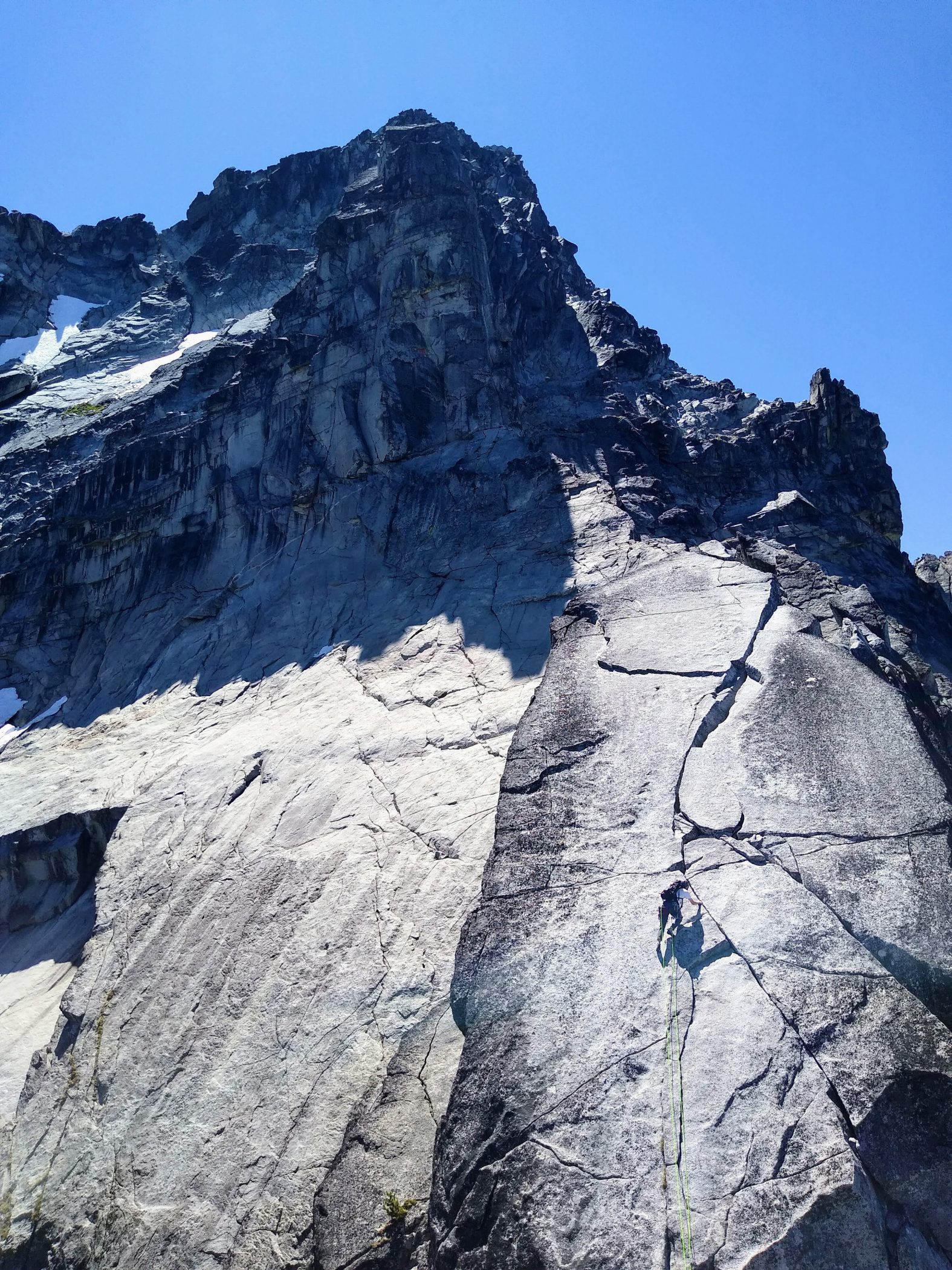The Proudest Line
The North Ridge of Mt. Stuart is a famous alpine rock route, not just in Washington, but nationally. The buttress juts out of the wild north side of Stuart, rising 2800 ft. from base to summit, with hanging glaciers on either side. I have spent so many days gazing at the North Ridge, from many different vantages. The climb is long and moderate (5.9), but notorious for being the source of many epics. I had done the Ice Cliff and West Ridge twice, but never felt quite confident enough for the North Ridge. With Jacob in town for the month of July, we finally felt ready to tackle this monster of a climb. It had been a dream for us for so long, ever since we started trad climbing together.
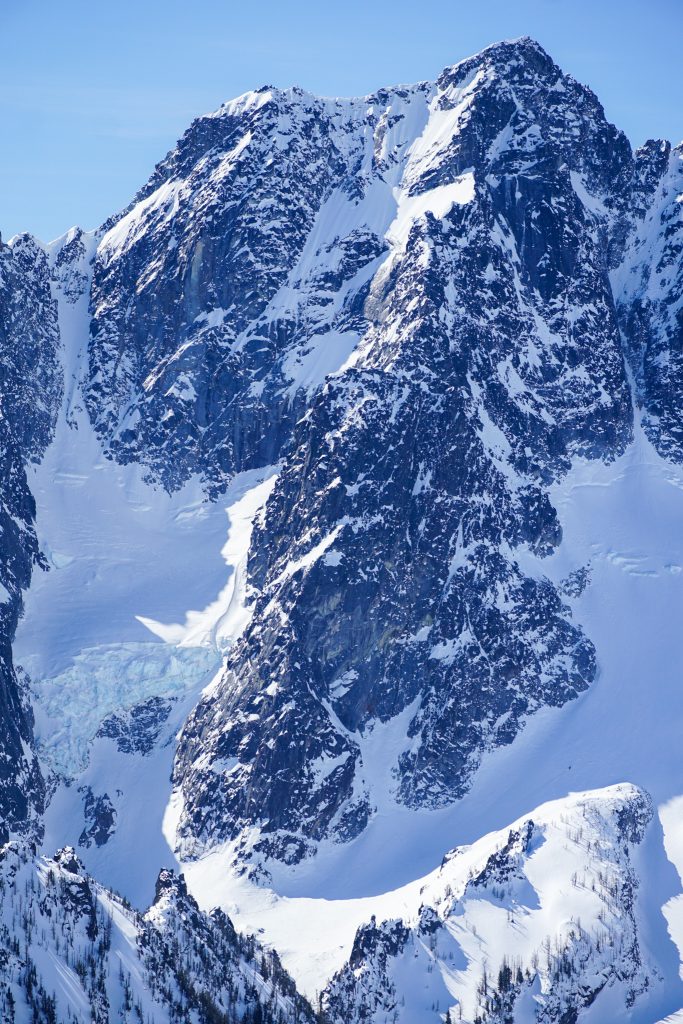
We left the Esmerelda Trailhead at 3 am and started hiking towards Lake Ingalls. It got light as we scrambled around the left side of the lake. From Stuart Pass, we followed the trail down to 6000 ft and then cut eastward into the beautiful boulder basin beneath the West Wall, site of the mythical Gorillas in the Mist. We did not see any gorillas, but it was not a misty morning. Perhaps the humidity was too low.
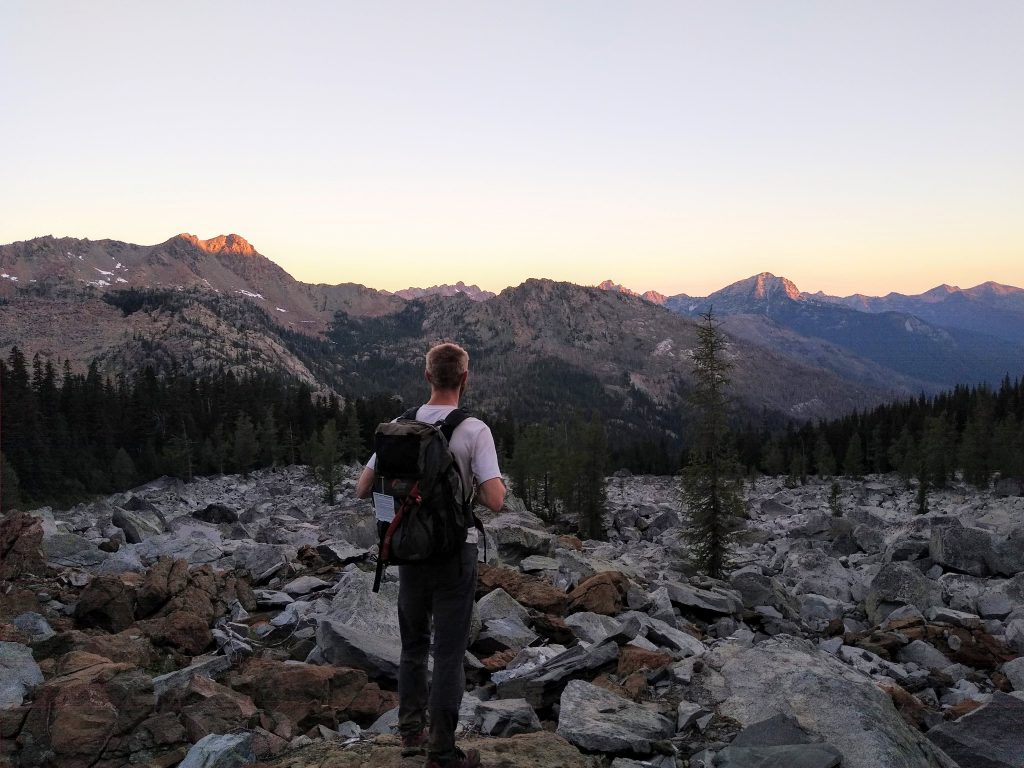
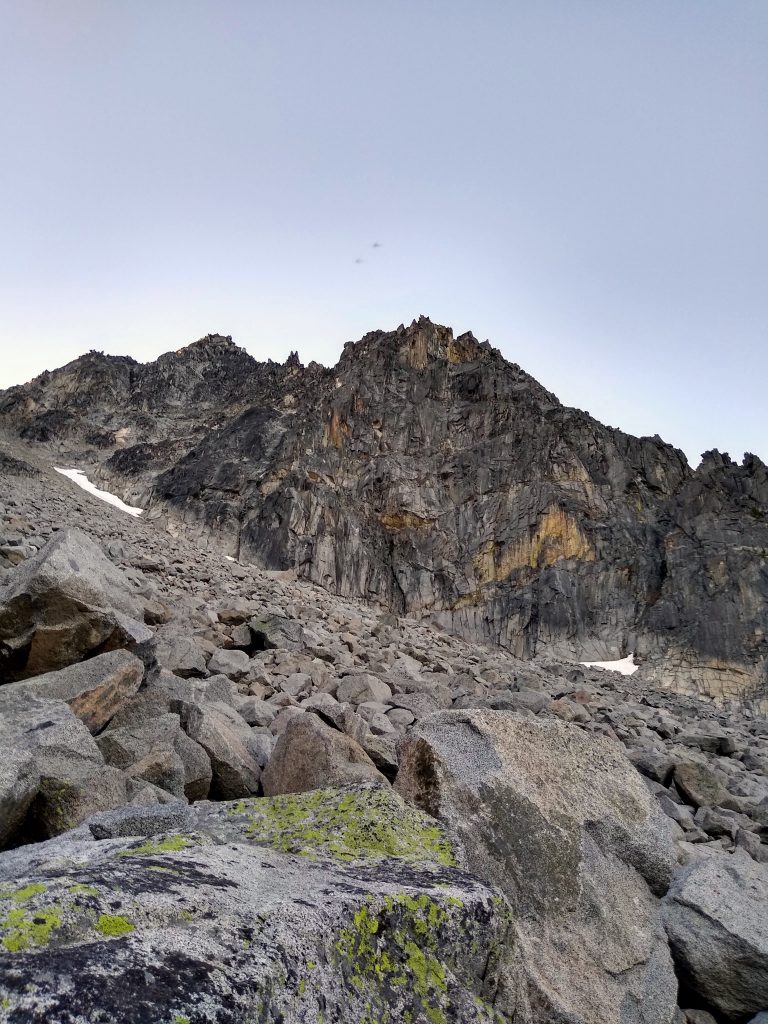
We kept a relaxed pace up to Goat Pass, swatting mosquitoes that persistently followed us. We hit the sunshine at the pass and took a snack break in the warmth.
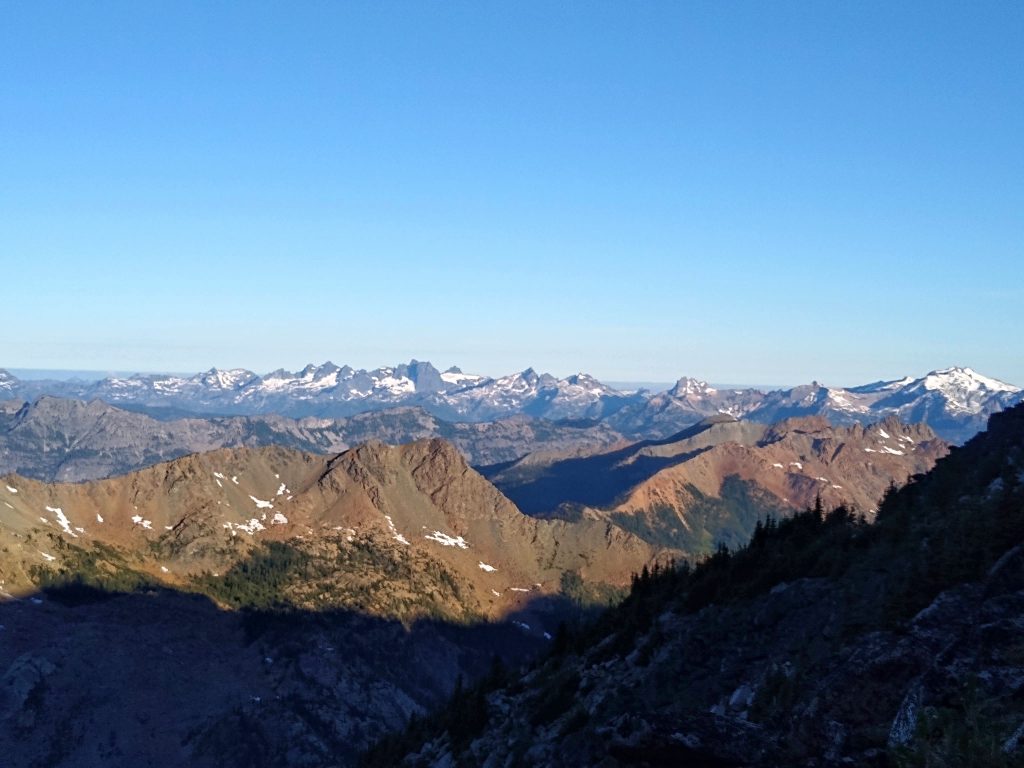

There were a few short snowfields to cross beneath the Stuart Glacier. None were steeper than 25 degrees or so, but the snow was still pretty firm in the morning. We had brought light microspikes instead of crampons to save weight. I easily plunge stepped down the snow in my Ultra Raptors, but Jacob struggled in his Topo Athletic trail runners, even with Kahtoolas Microspikes on. We lost a fair bit of time here. Some of the snow was avoidable on loose moraine, but some crossings were mandatory, at least at this point in the year.
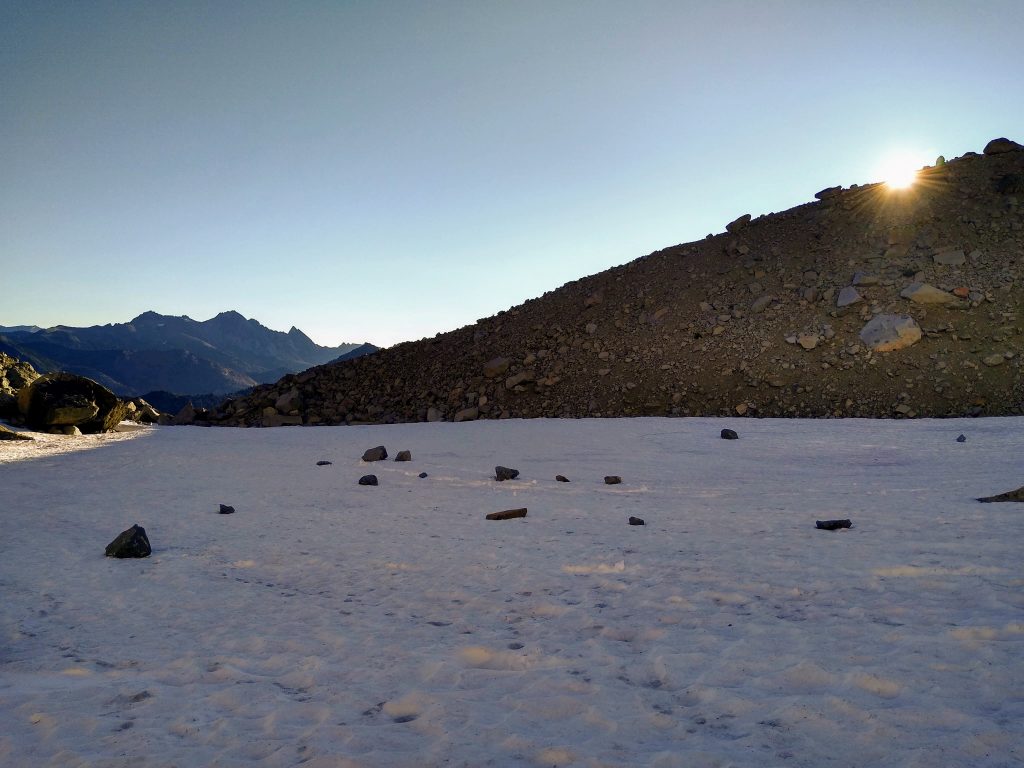
Most climbers complain about the long, circuitous approach to the base of the North Ridge from the Ingalls side. True, it is pretty long, but it is also incredibly beautiful. This is the kind of stuff I do on my high routes and backpacking trips for fun. Aside from the mosquitoes, I was enjoying the morning stroll. The giant granite walls and little pocket glaciers with waterfalls pouring out transported me back to the Palisades of the High Sierra. It was wonderful.
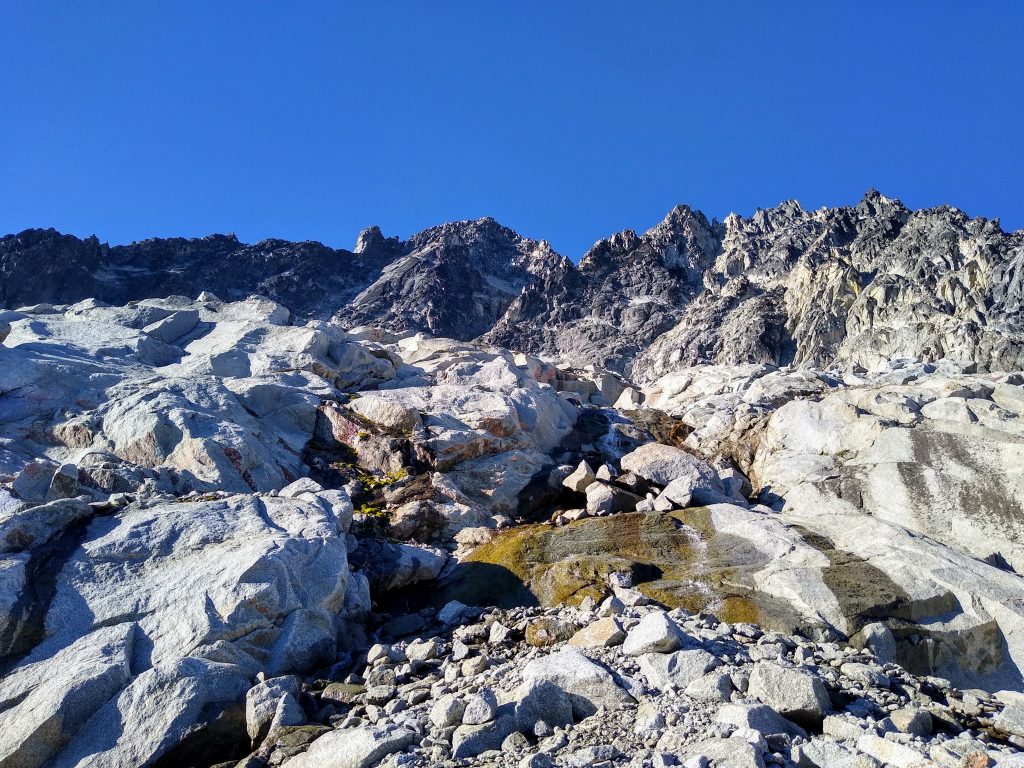
We filled up two liters of water each at one of the streams and then continued down to the base of the North Ridge. Here we met two Leavenworth climbing rangers, who were heading out. One of them had climbed the entire North Ridge in trail runners! They must be hard core crushers…
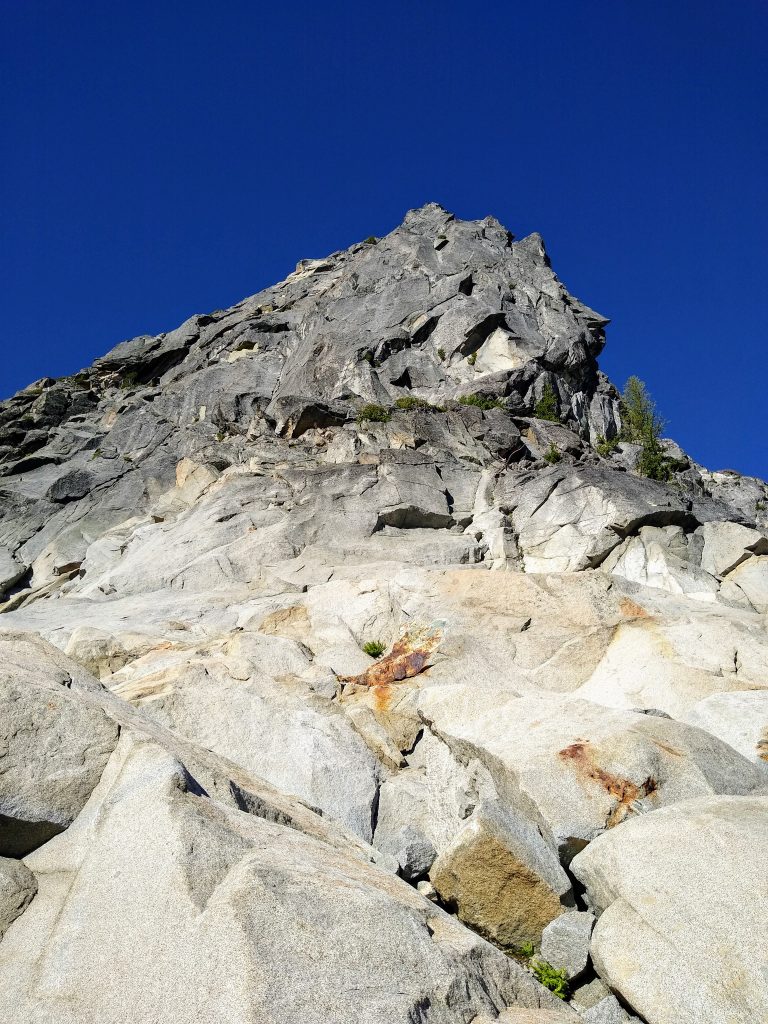
We were both stoked and racked up quickly. We started scrambling towards the distinctive “J Pine” of the first pitch, but ran into a short step of 5.7 thin fingers on the “scramble” so we broke out the rope and did a quick pitch 0. I think there may be a 4th class way around to the left.
Jacob led the first pitch, which ended with a 5.8 squeeze chimney. He was struggling with the pack on, so he clipped it to a piece and then pulled the move. Unfortunately, he had tied in on both ends of our twin rope, so we were not able to haul his pack. Thus, I ended up following the chimney with my pack on my back and his pack suspended between my legs! Apparently I figured out the beta (left shoulder in, standard chimney technique) because it was actually pretty easy, despite the weight.
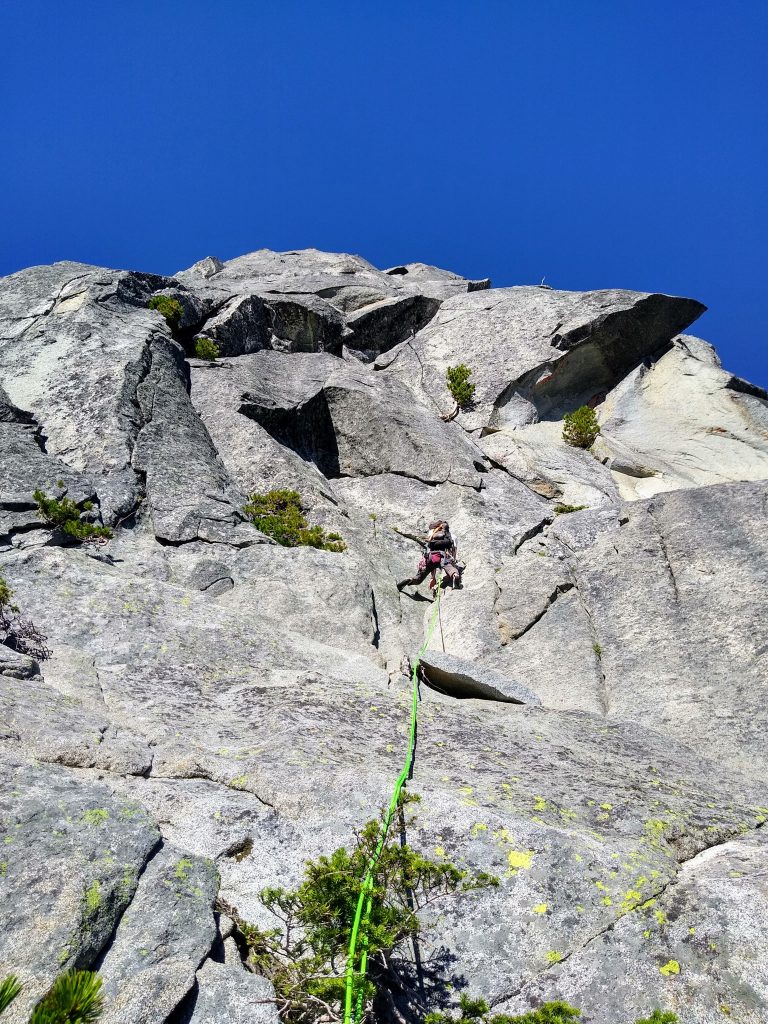
I led Pitch 2, which was short and easy. Jacob wanted to take Pitch 3, with is the overall 5.9+ crux of the route. He got a little cruxed out at the insecure layback and pumped himself out, taking a short fall on the fixed nut. So then he just aided that short section before climbing the rest. Once again, I followed with his pack hung beneath me. The layback was indeed insecure, but with the comfort of a top rope, I was able to fire through it pretty quickly.
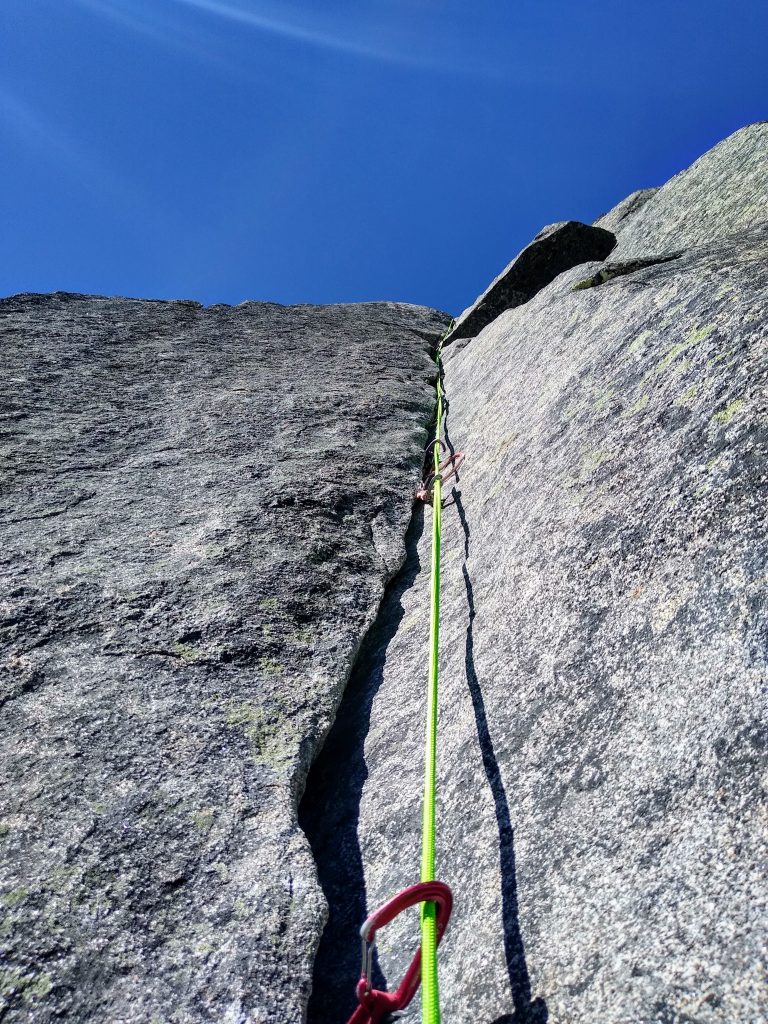
From here, the route features thousands of feet of 3rd to mid 5th class climbing close to the ridge crest. I grabbed the rack and set off, doing what I do best as a rock climber: routefind decisively and move quickly over easy terrain.
We were both impressed by the quality of the simul climbing section. On most alpine climbs I have done, like Serpentine Arete, the simul climbing sections are generally forgettable and have a lot of loose rock. On the North Ridge, the simul climbing was athletic, clean, and fun. We were hand jamming, laybacking, mantling – climbing, not just scrambling. Maybe there are ways to avoid fifth class if you really wander, but the cleanest route definitely involves a lot of 5.4-5.6 climbing.
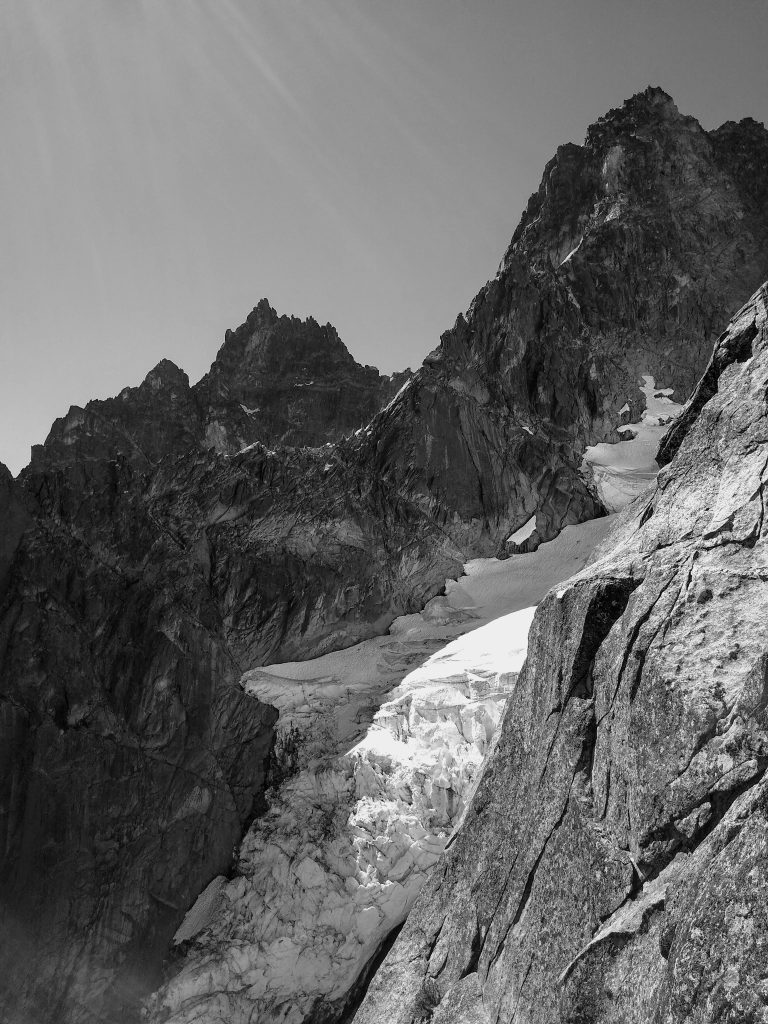

We had brought a double rack and dozen slings, so I was able to lead these giant, hour long simul blocks. After reaching the notch where the Abbreviated North Ridge joins, the ridge got distinctly sharper and more exposed. We were shouting in ecstasy with little 5.5 laybacks on a knife edge crest or hand rails over the abyss. The position was fantastic, and it just kept getting better the higher we got.
Two long simul bocks got us to our first clear view of the Great Gendarme, the crux of the upper North Ridge. It has a reputation for hard off width climbing. I find that hyped up difficulties, like the NW Couloir of Shuksan, can have a way of getting into my head. But I told myself that I have been climbing solidly at Index this summer at the 5.9 grade, so I should be fine.
Jacob lead a short simul block up the fantastic 5.5 slab with a crack and over to the base of the Great Gendarme. The slab was one of the highlight pitches to me – easy, fun, and so aesthetic.

We reached the base of the Great Gendarme a little before 3 pm. We had been climbing in the sun for nearly 7 hours at this point and it was nice to feel a breeze and lie in the shade. The rock was cold to the touch, perfect for sending temps. We were both starting to fatigue, but this is what we came for.
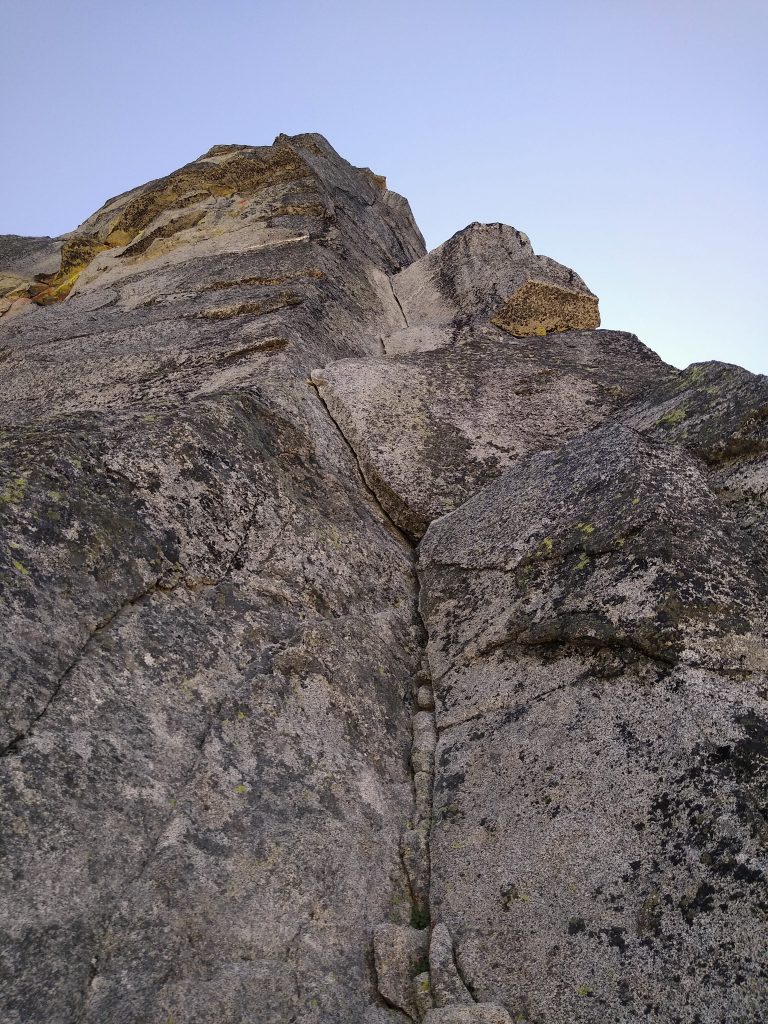
I took the first pitch of the Great Gendarme, which featured a series of 5.8 laybacks, underclings, and corners, each one harder than the last. It was a beautiful pitch, so clean and splitter. The final layback was strenuous, smearing my feet on the wall to the left, burning through the tiny reserves of strength in my forearms. I could feel the pump clock ticking. But I found the hand jams, plugged in gear, and rocketed through it. For a weaker climber like me, it was either send with speed or be sent back down.
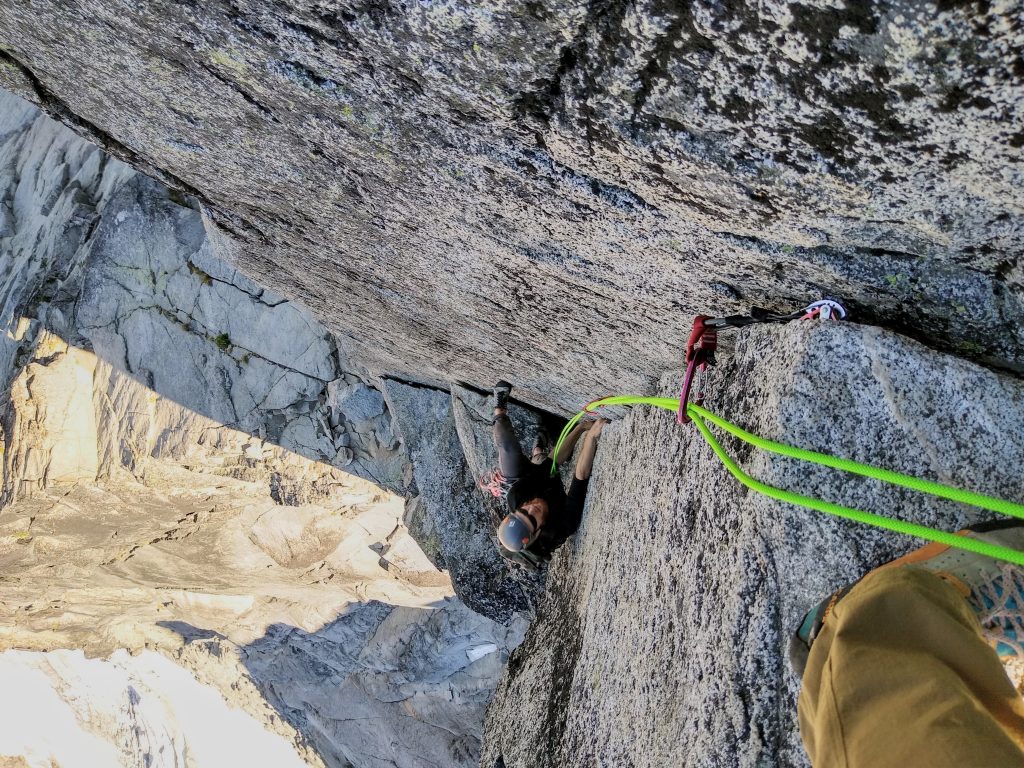
Jacob took a break before racking up for the off width second pitch of the Gendarme. We swapped ends of the rope so we could haul his pack, not repeating the mistakes of earlier. Jacob made the traverse rightward and then launched into the wide crack. As he clipped the stuck #4 cam, I reminded him that there was no shame in pulling on gear if needed, to which he responded “Screw that, I’m gonna send it!”
Atop the sunny pedestal halfway up the Great Gendarme, I watched Jacob, who learned to climb with me five years ago, pull the crux moves and finish the pitch with confidence. Here we were, all alone, on this beautiful hunk of stone, thousands of feet off the deck. While I love the simplicity and speed of non technical travel in the mountains, technical climbing creates such a visceral experience with mountains – you feel each fingerlock, the way the rock sweats, the way each fiber in your body strains for upward progress. As climbers, we seek not the easiest way through, but the hardest, most challenging. We dance upon the edge of control; we reach for the suspension of gravity. What we can accomplish when we truly commit ourselves is both humbling and amazing.
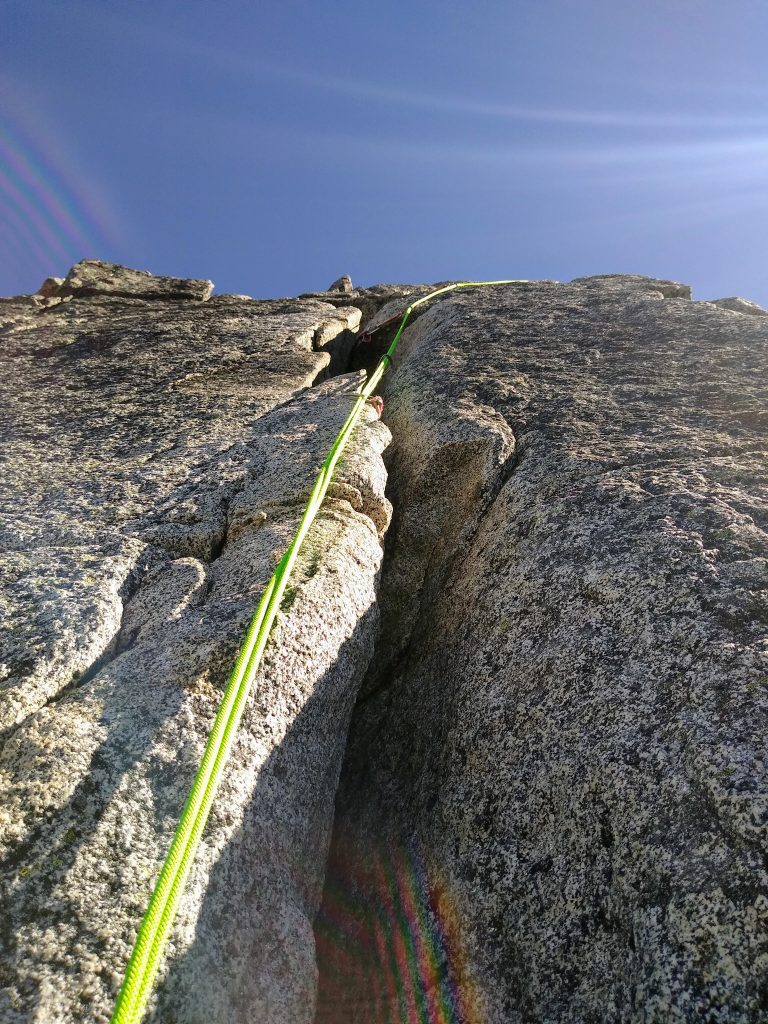
As I entered the wide crack, all my off width fears disappeared with each bomber fist jam – there were no OW moves required! I actually found this pitch to be easier and more secure than the previous pitch, but then again, I was top roping.
From the ledge atop the second pitch (not atop the Gendarme), I led one last simul block towards the summit, through the 5.7 hand crack, and onto easier terrain. We reached the summit a bit after 5 pm, 9 hours after we started climbing, and 14 hours after we started from the car. We were quite tired, but incredibly satisifed.
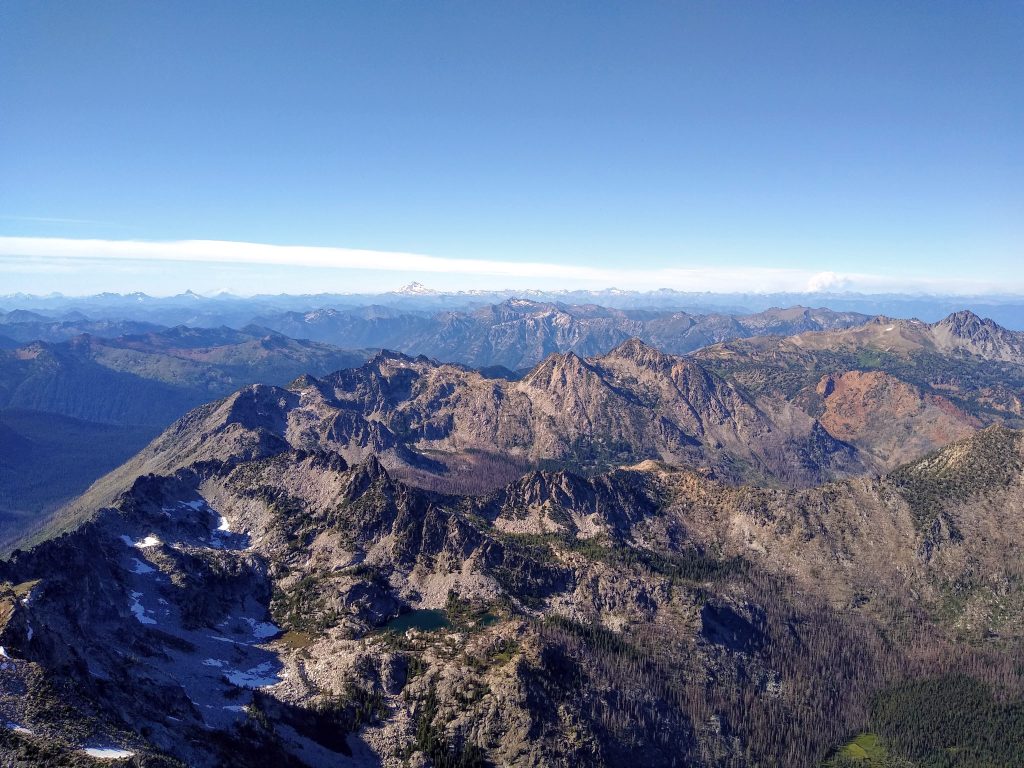
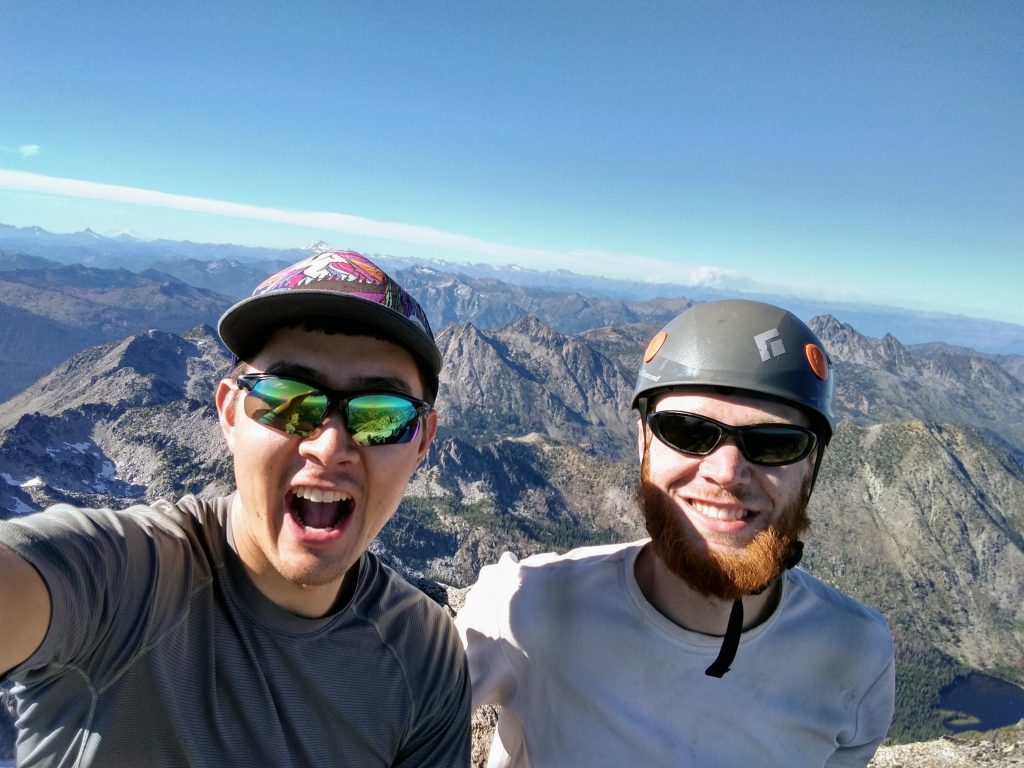
All day we had been alone and the summit of Stuart was similarly deserted. We luckily found running water coming from the small snow patch between the true summit and false summit. Then we continued on our long descent of the Cascadian Couloir, aka the Poop Chute. We were motivated by the 11 pm closing of Taco Bell in Cle Elum, and my morning meetings for work the next day.

We climbed back up to Long’s Pass, swatting mosquitoes once again, as alpenglow kissed the south side of big Stewie. He is such a magnificent mountain: complex, massive, and beautiful.
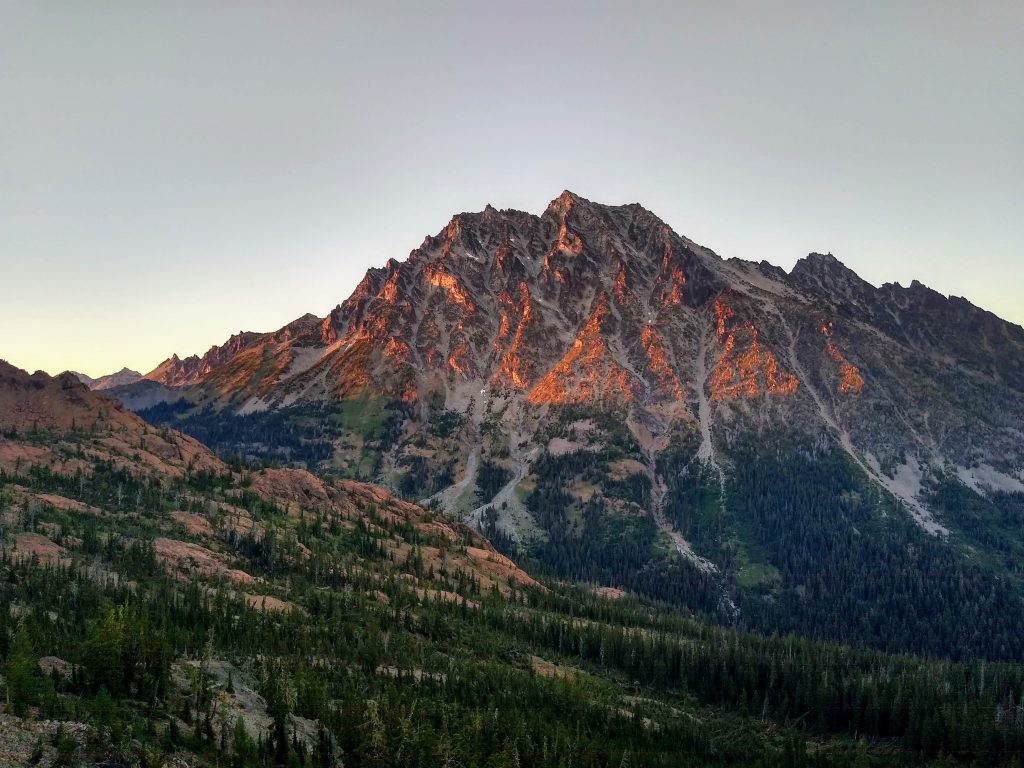
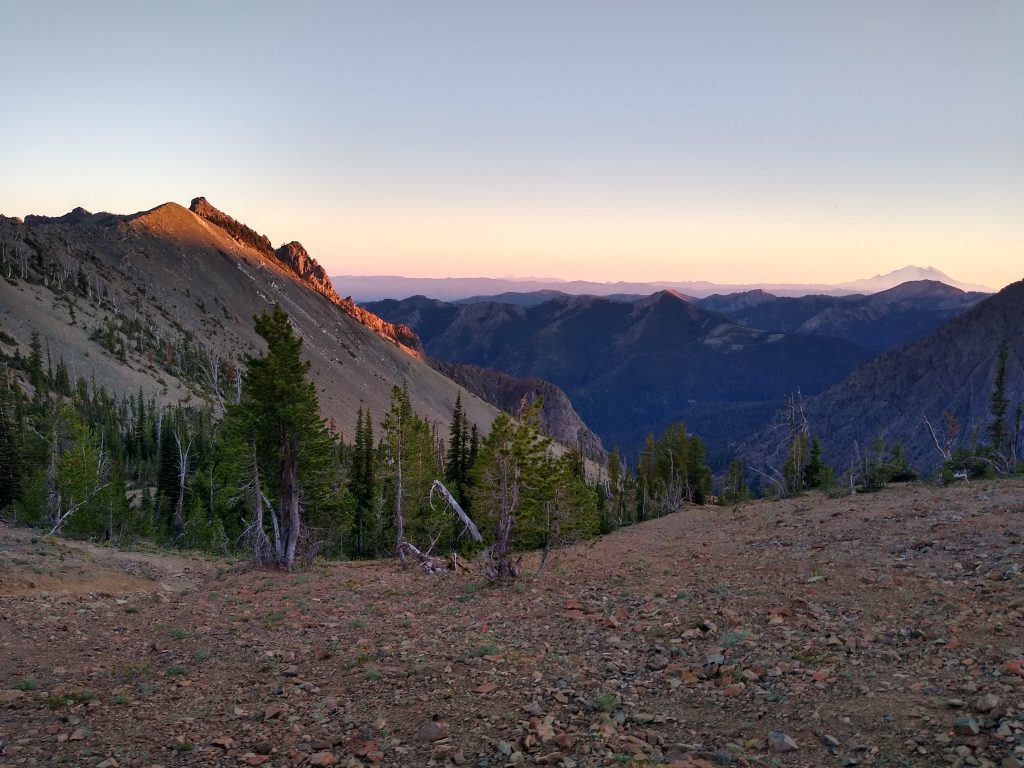
We cruised down the trail and reached the trailhead just barely without needing a headlamp at 9:30 pm, a full 18.5 hours after we started. With empty stomachs, bags full of vert, and hearts full of happiness, we drove into the receding darkness.
The North Ridge of Stuart was a challenging but incredible day for Jacob and me. Honestly, I did not fully comprehend the size of this route going in. But our collective climbing experience served us well, allowing us to move reasonably efficiently over the course of a long day. The actual rock climbing was consistently phenomenal, with many individual sections that would be classic if they were taken out of the alpine and transplanted to a crag. It provided just enough technical challenge to force us to dig deep, which is always a memorable experience in the alpine. It brought together nearly everything about rock climbing that I love – exposure, position, route finding, crack climbing, the list goes on.
The high is still wearing off, but I believe the Complete North Ridge is completely deserving of its classic status and immediately ranks amongst the best alpine rock routes I have done, including the South Face of Charlotte Dome and the Northeast Face of Pingora. It is certainly the longest. It is the proudest line, and a line I am very proud to have climbed.
Notes:
- The total mileage for the day was around 15-20 miles and 9.5k gain.
- We took 5 hours to approach from the south, 9 hours to climb, and 4 to descend. Obviously, climbing times could vary greatly. We did have our difficulties and climbed at a moderate pace, so it would be easier for a more competent party to climb faster, but it is also easy to be much slower if you struggle with routefinding or simul climbing.
- We did not bring traction, which was fine for me, but that probably cost us time overall since Jacob struggled with the small snowfields. They were generally not very steep and get morning sun, so it depends on your footwear and comfort on snow. We brought axes but never used them.
- There was no snow or running water on route at this time of year. We got lucky with the running water just below the summit, but I would not count on that.
- The mosquitoes were viscous! Fortunately, they generally left us alone after the first 3 pitches.
- We felt that the 3rd pitch was the technical crux at 5.9+. The Gendarme pitches probably both go at 5.8+ or so, but the first Gendarme pitch felt a bit more strenuous than the second.
- We brought a double rack from .5-2, a 3, a .3 and .4, and nuts. We had 12 alpine draws and 2 anchors. For 5.9 climbers like us, the double rack was really appreciated on the harder pitches and allowed us to simul climb in longer blocks. The single 3 was very sufficient for the second Gendarme pitch. The fixed 4 is still there, and someone even replaced the sling!
- We used a skinny 60m twin rope doubled over. All of the pitches are 30m or shorter, so this worked well and makes for no transition time between pitching and simuling.
- The second pitch of the Great Gendarme was the first time we ever hauled the leader’s pack. It was so easy that we were wondering why we do not do this more! Since these pitches are short and straight, hauling works really well. Have the leader tie into the middle of the rope. Bring a micro traxion for the progress capture.
- It is hard to understand how long this route is until you get on it. It is 2800 ft tall, but there is significant horizontal covered so it feels longer than that. The grade is only 5.9, but it is just more involved and committing than your typical 5.9 climb. There are many little things that could slow you down, leading to an epic. Thus, some people bring bivy gear, but climbing all the simul terrain with heavy packs also sounds tough.
- There is much discussion about the merits of the north and side approaches. Past June, I feel that the south side makes more sense because the Sherpa Glacier Couloir requires rappels and heavier gear for snow. Yes, the south side approach is long, and yes, the Poop Chute is loose, but it is really nice to put away the rope on the summit and brainlessly walk out to the south side.
